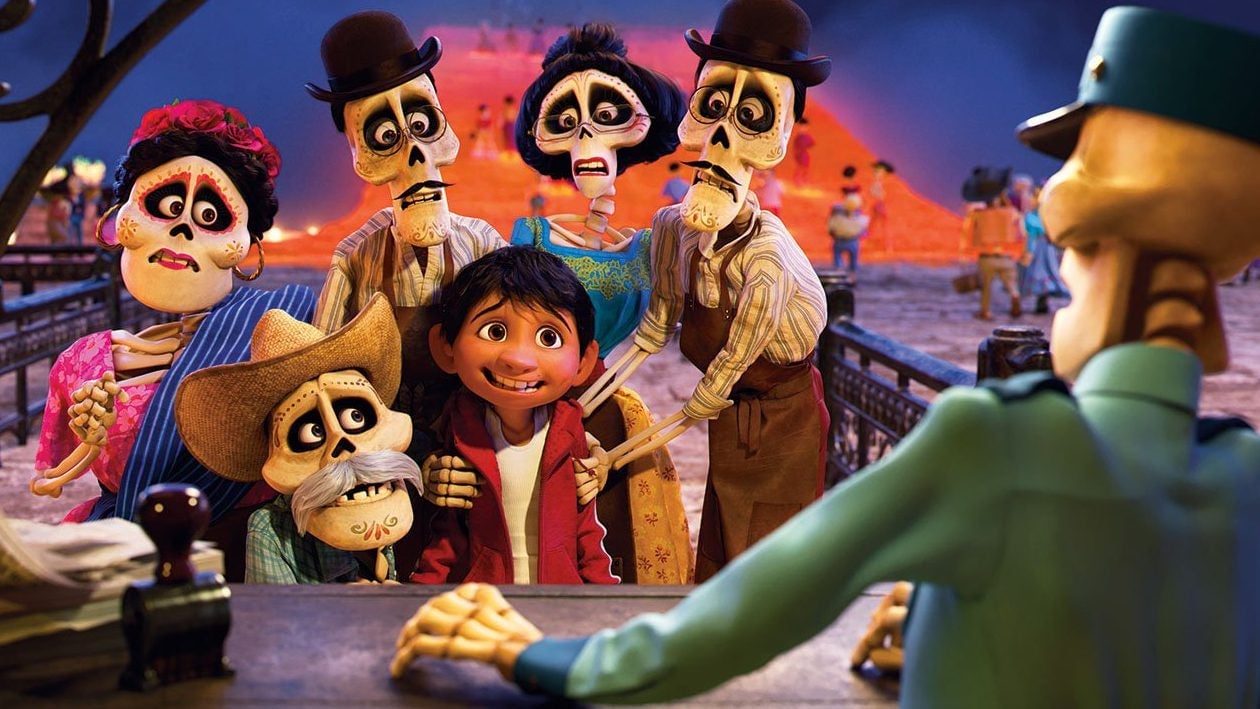There’s a timely management lesson in Disney and Pixar’s success with “Coco”
Before Star Wars: The Last Jedi completely takes over the conversation about movies (and everything else), it’s worth taking a closer look at the current box office winner of three weekends running, Coco, by Disney and Pixar. Its back story offers a particularly timely lesson about inclusion.


Before Star Wars: The Last Jedi completely takes over the conversation about movies (and everything else), it’s worth taking a closer look at the current box office winner of three weekends running, Coco, by Disney and Pixar. Its back story offers a particularly timely lesson about inclusion.
In the animated film, we meet a Mexican boy named Miguel, who dreams of becoming a guitar player like his idol, the late Ernesto de la Cruz, but is forbidden from taking music lessons. Frustrated, he steals the famous singer’s instrument from the icon’s mausoleum on the Mexican holiday Dia de los Muertos, or Day of the Dead, as kids will do. But that leaves him cursed, instantly transported to the Land of the Dead, where he encounters his ancestors and a whole population of other delightful skeletons, who collectively educate the boy in matters of life and family as he seeks a path back to the living.
In its early review, Variety pointed out that all of this was not terribly original, but that it wouldn’t matter, noting that “the story’s sincere emotional resolution earns the sobs it’s sure to inspire.” And earn it did—Disney recently placed Coco’s total US revenue at $135.5 million and counting.
What really saved the film from becoming a cliché, however, was a series of decisions made along the way with important lessons for managers, and for companies that want to be sincere in their efforts to foster diversity.
The whole project got off to a bumpy start in 2013, when, in pursuit of its goal of producing a film about Mexican culture, Disney filed an application to the US Patent and Trademark Office to secure the phrase “Día de los Muertos,” or “Day of the Dead” for its own marketing purposes.
Mexicans and Mexican Americans were naturally outraged. Patenting the name of an ancient holiday (its customs, like creating colorful altars for the dead, were inspired by Aztec traditions and later adapted to Catholicism) as a branding phrase meant to move films, snacks, jewelry, or clothing on behalf of Disney and Pixar, felt like next-level cultural appropriation.
Lalo Alcaraz, a popular satirical comic artist whose work has appeared in The New York Times, The Village Voice, and the Los Angeles Times, responded with a new character: “Muerto Mouse.” He was a towering figure, stalking towns, Godzilla-like, and “coming to trademark your cultura!,” according to Alcaraz’s original cartoon.
Alcaraz, also the founder of the news and satire site Pocho.com, had already developed a name for himself as a Disney critic, as he recently explained to the National Public Radio show Latino USA. His first anti-Disney character was invented in 1994, when Disney donated to the re-election campaign of Pete Wilson, then the incumbent governor of California and strong supporter of Prop 187, a ballot initiative that would have prohibited undocumented immigrants from receiving basic benefits like non-emergency health care and public education. At the same time that it was enriching Wilson’s coffers, Disney had also begun dubbing its films into Spanish, courting the Latino market.
Noting the hypocrisy, Alcaraz created “Migra Mouse,” a Mickey proxy in a border guard’s uniform, cheerfully directing arrivals to the US to return to Mexico.
“That cartoon went viral, before there was even the internet,” he told the radio program. “It just went everywhere, it was used in marches, and people would redraw it and build papier-mâché masks of it.”
Logically, then, Muerto Mouse, Migra’s younger and instantly recognizable cousin, was among the responses that convinced Disney to withdraw its application to patent “Día de los Muertos” four years ago.
Then, during the production of Coco, the studio took an extra step to shore up its cultural sensitivity quotient: For the first time in its history, Pixar invited outsiders—cultural consultants—into their creative process, including its highly visible critic Lalo Alcaraz.
“We brought our consultants in quite early on,” showing them early, incomplete footage, “which is just not normal for Pixar,” producer Darla Anderson told the Los Angeles Times. “We had to be open to them being part of our trusted team.”
The wisdom of that decision is indisputable now. Coco has been almost uniformly warmly received by Mexican and Mexican-American audiences, and was just nominated for a Golden Globe award. In interviews, the film’s director, Lee Unkrich, who won an Oscar for Toy Story 3, has credited the consultants with touches that made the movie feel relevant and respectful of the culture it was trying to portray. For instance, Miguel’s grandmother was originally going to wave a large wooden spoon as her threat of punishment, but the consultants convinced the film’s producers that it had to be her “chancla,’ or slipper, a detail that has resonated with viewers.
With Coco, Pixar demonstrated the power of really listening to your critics, while also illustrating that audiences are eager for authentic stories about diverse cultures. (Slate’s Aisha Harris believes Disney owes its current golden age to its relatively new emphasis on diversity and inclusion.) Meanwhile, Alcaraz’s involvement—he told Latino USA that he interviewed the Disney execs, testing for sincerity, before signing on to the project—exemplifies the potential upside to keeping an open mind about the institutions one loves to hate.